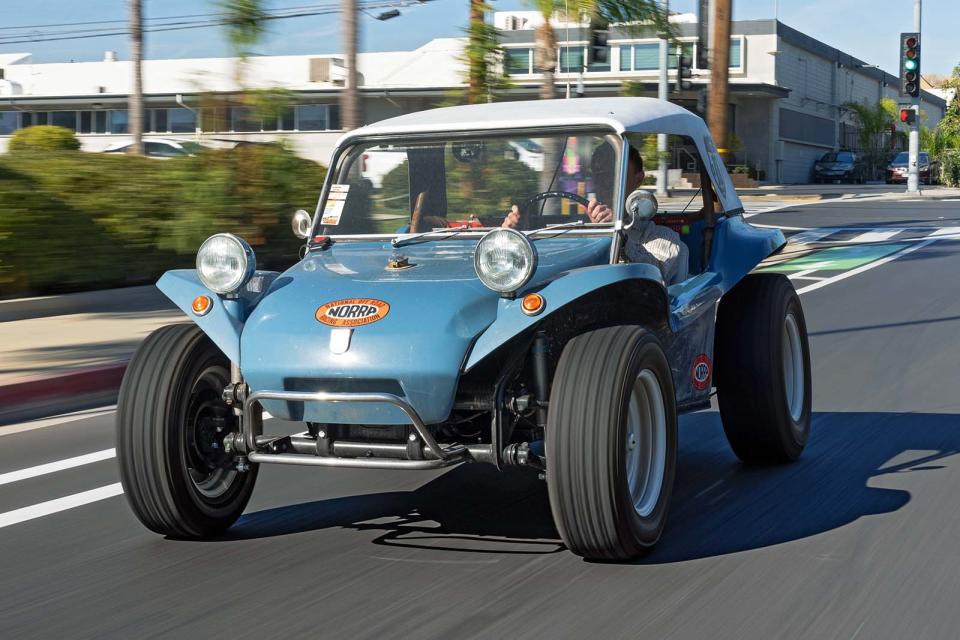Inside Meyers Manx: the most fun car company in the world?

Meyers’ Manx hits 60 this year but its maker is looking to the future
You might not know the Meyers Manx name, but you definitely know its shape.
This is the original beach buggy: designed in the 1960s as a no-frills, Beetle-based hobby car that could be assembled cheaply at home. It is, if you like, America’s take on the Caterham.
It’s the brainchild of the legendary Bruce Meyers, who completed his first car in 1964 and was 94 when he and wife Winnie finally retired in 2020, and continued to contribute to its story until he died a year later.
“We got some time with him before he passed, which was great,” says Michael Potiker, a partner at Trousdale Ventures – the venture capital firm “that’s basically incubating Meyers Manx”, having acquired it from Bruce in 2020.
“He wasn’t ill when we did the deal. It wasn’t something we needed to get done because he was going to pass away. It seemed like he was going to live forever. He had that vibe to him,” says Potiker.

Meyers’ original company, BF Meyers & Co, was actually a relatively short-lived business, folding in 1971 after just seven years due to financial issues.
He resurrected the name in 2000 when he founded Meyers Manx Inc and restarted production of his Beetle-based creations, adding the longer-wheelbase Manxter 2+2 and Dualsport, and the new-look (well, newer) Manx Kick-out, building the company’s profile over the next two decades and establishing a community of loyal customers and fans.
Potiker says Trousdale founder – and now Meyers chairman – Phillip Sarofim “grew up driving Manx buggies and always had an affinity for them”.
When Potiker had his first go, he was quickly sold on the Manx’s broad appeal, which transcends social class and has become almost as recognisable and beloved as the Beetle on which it is based.
He says: “When I drove the car around downtown San Diego, I was getting thumbs up from everybody on the street, and then I took it to an upscale area and it was the same thumbs up. It’s a classless car.”
So too, he says, is new CEO Freeman Thomas – who grew up in the California beach scene – “enamoured with the whole dune buggy thing”. Thomas joined Meyers off the back of four decades as a prolific car designer and is best known for his contributions to the Audi TT, Chrysler 300 and revived Dodge Charger.

Appropriately, though, he also worked alongside J Mays to reinvent the Volkswagen Beetle in the 1990s and he created the buggy-style Treo concept to showcase Jeep’s vision of “the ultimate student car” in 2003.
Retro, compact off-roaders, then, should be well within his wheelhouse – and that’s reassuring because little old Meyers must now confront the looming inevitability that is modernity.
After six decades of screwing its trademark glassfibre shells to Beetle floorpans and sending them out the door, armed with four cylinders of rattly air-cooled fury, the formula must change.
Because while Meyers’ new owners strive to preserve its old-school ethos, working practices and loyal customer base by “remastering and stabilising the kit car business”, Trousdale is also committed to “bringing the brand into the future”, which means electrification beckons.

And so to the Meyers Manx 2.0 EV, a completely new take on the formula: familiar in its conception but new in every tangible respect.
Bosses remain tight-lipped on where the batteries and motors come from but claim outputs of around 200bhp and 200lb ft, a range of up to 300 miles from the biggest-battery variant and, most notably, a kerb weight of around 1650kg – heavy, sure, but not inhibitively so, and testament to the work the company has done to preserve the characteristics of the original car.
Potiker says the priority for designer Thomas “was to keep the spirit and the dimensionality of the classic Manx” even as it becomes a radically different technical proposition. “There have been other attempts at beach buggies that have been bigger that are just not successful,” he said, “due to the scale being too big.”

 Yahoo Autos
Yahoo Autos 